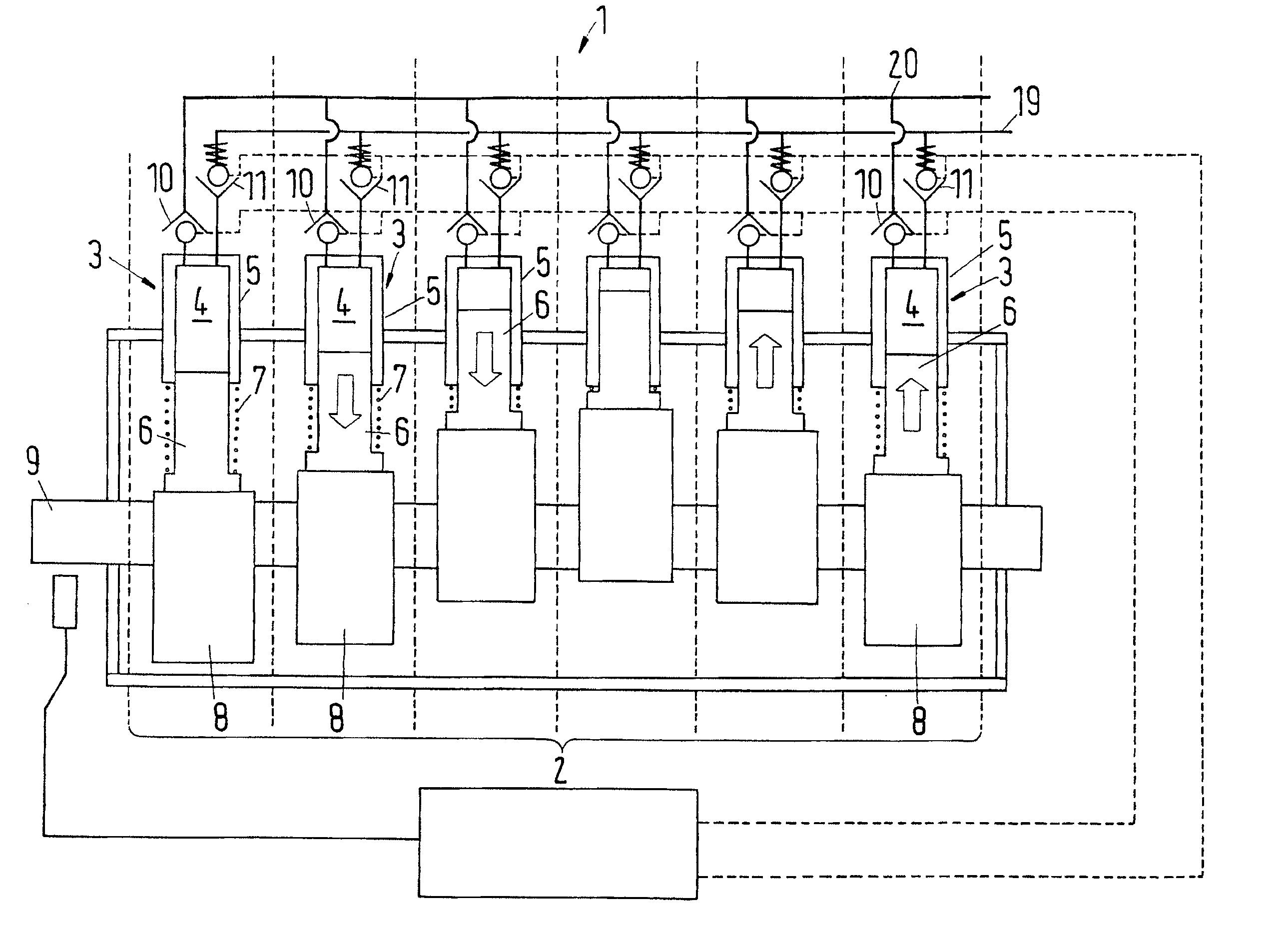Method of controlling a cyclically commutated hydraulic pump
a hydraulic pump and cyclic commutation technology, applied in the direction of pump control, fluid couplings, positive displacement liquid engines, etc., can solve the problems of starting a full stroke pumping cycle, no longer available for additional pumping, and actually being problematic, so as to reduce pressure pulsation
- Summary
- Abstract
- Description
- Claims
- Application Information
AI Technical Summary
Benefits of technology
Problems solved by technology
Method used
Image
Examples
Embodiment Construction
[0039]In FIG. 1, an example of a synthetically commutated hydraulic pump 1, with one bank 2, having six cylinders 3 is shown. Each cylinder has a working space 4 of a cyclically changing volume. The working spaces 4 are essentially defined by a cylinder part 5 and a piston 6. A spring 7 pushes the cylinder part 5 and the piston 6 apart from each other. The pistons 6 are supported by the eccentrics 8, which are attached off-centre of the rotating axis of the same rotatable shaft 9. In the case of a conventional radial piston pump (“wedding-cake”-pump), multiple pistons can also share the same eccentric 8. The orbiting movement of the eccentric 8 causes the pistons 6 to reciprocally move in and out of the respective cylinder parts 5. By this movement of the pistons 6 within the cylinder parts 5, the volume of the working spaces 4 is cyclically changing.
[0040]In the example shown in FIG. 1, the synthetically commutated hydraulic pump 1 is of a type with electrically actuated inlet valv...
PUM
 Login to View More
Login to View More Abstract
Description
Claims
Application Information
 Login to View More
Login to View More - R&D
- Intellectual Property
- Life Sciences
- Materials
- Tech Scout
- Unparalleled Data Quality
- Higher Quality Content
- 60% Fewer Hallucinations
Browse by: Latest US Patents, China's latest patents, Technical Efficacy Thesaurus, Application Domain, Technology Topic, Popular Technical Reports.
© 2025 PatSnap. All rights reserved.Legal|Privacy policy|Modern Slavery Act Transparency Statement|Sitemap|About US| Contact US: help@patsnap.com



